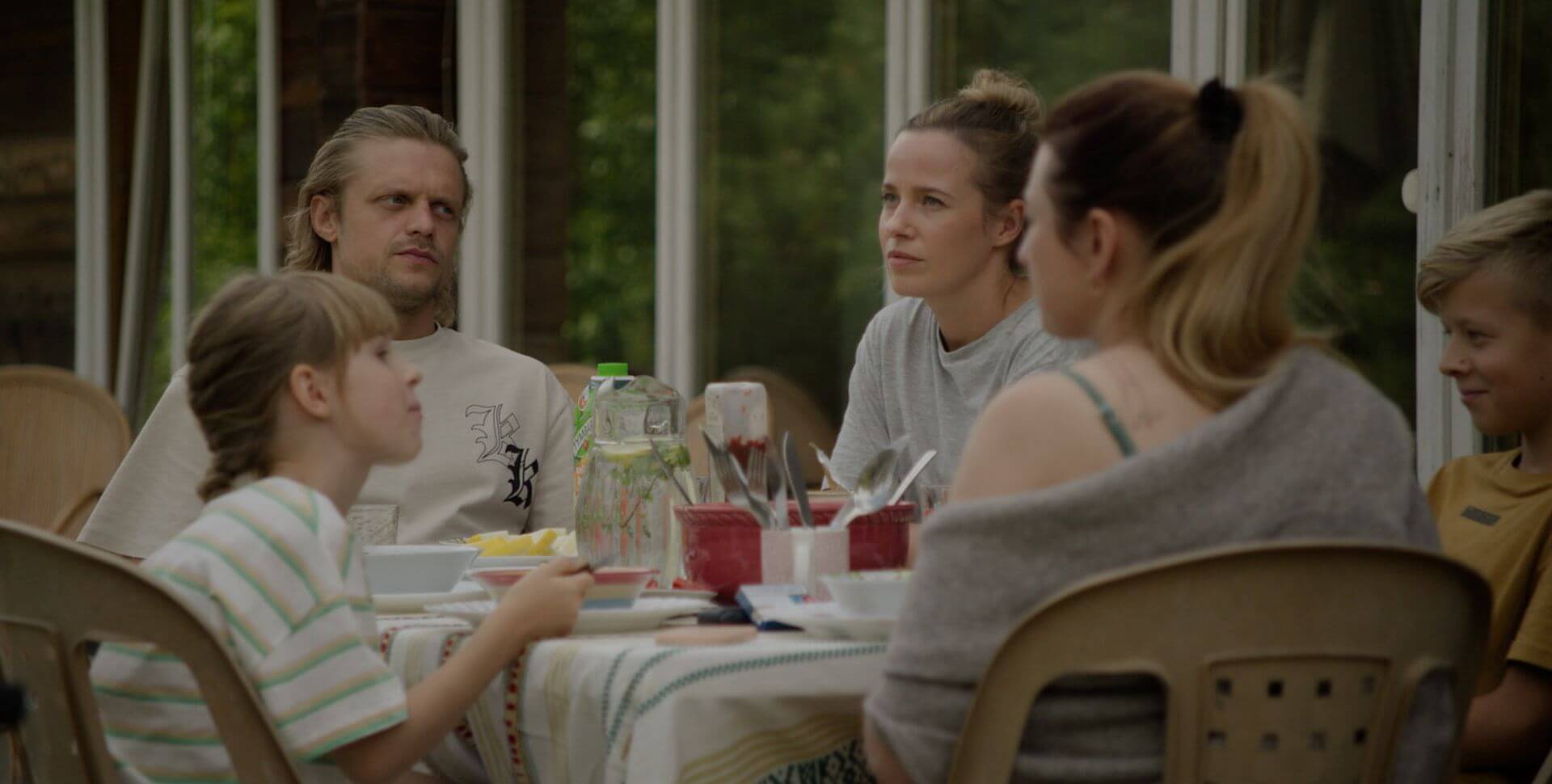Drowning Dry is a 2024 drama film written and directed by Laurynas Bareiša. The film centers on a family's weekend away at the countryside summer house, which does not go as planned. The film premiered at the 77th Locarno Film Festival, where Bareiša received the Best Direction Award and was selected as Lithuanian's entry for the 97th Academy Awards for Best International Feature Film.
A meditation on grief, memory, and fractured relationships. The Lithuanian director's latest work is a film that actively resists easy emotional engagement. While it offers an unconventional narrative structure and visual storytelling approach, its slow pace may alienate audiences looking for more immediate emotional resonance. The film's premise is simple: two couples—Lukas and Justė, Tomas and Ernesta—gather in a countryside summer house to celebrate Lukas' martial arts tournament victory and Tomas' birthday. What is intended as a peaceful weekend retreat slowly unravels into an exploration of familial tensions, past traumas, and unspoken grief. However, the film deliberately refrains from telling this story in a straightforward manner. Instead, Bareiša employs a non-linear, fragmented storytelling direction, crisscrossing between past and present, memory and reality. This structure, while intriguing, can also be jarring for some audiences, making the film a puzzle that requires active participation. As critic Robert Daniels aptly notes, "The crisscrossing of memories, some warped by grief, adds further textures to two broken families working to find some way forward beyond their shared paralysis" (2024). For some, this fractured approach will enhance the film's themes; for others, it may feel convoluted.
Bareiša's filmmaking leans on realism. The cinematography, characterized by static, lingering shots, fosters a sense of verisimilitude and naturalism. This aesthetic choice undoubtedly enhances the film's thematic depth, grounding its tone in an immersive world that feels real. Yet, at just 90 minutes, the film's pacing is very slow, and its subdued atmosphere risks veering into monotony. As a result, the tragic element of the story lacks the emotional weight it aspires to carry, leaving the audience more as distant observers rather than deeply invested participants in the characters' suffering. Some may like this; others may feel ambivalent about the film's events and messages. The performances, while naturalistic and fitting, are ultimately and simply satisfactory. There are no standout moments of raw emotional intensity or career-defining portrayals. This restrained acting style undoubtedly aligns with the film's realism and overall aesthetic, but the character's pain is observable and not necessarily felt.
The setting of the countryside summer house serves as both a practical and symbolic choice. The vast openness of the location juxtaposes the suffocating grief of the characters, creating an oxymoronic tension between tranquillity and emotional turmoil. While this contrast is visually compelling, it also highlights the film's tendency toward detachment—beauty, and suffering exist side by side, yet the film never quite bridges the gap between aesthetic contemplation and genuine emotional immersion.
Drowning Dry is a film that will likely polarise audiences. Those who appreciate fragmented storytelling, intellectual filmmaking, and subdued realism may find it a rewarding experience. However, mainstream audiences, or those seeking an emotionally resonant tragedy, may find themselves left cold. It is perhaps no surprise that Drowning Dry will appeal most to cineastes and those drawn to cerebral, formalist filmmaking. There are echoes of Michael Haneke in Bareiša's clinical approach—particularly in the way the film invites intellectual engagement rather than emotional catharsis. However, where Haneke's films often leave an indelible psychological impact, Drowning Dry struggles to match that same level of affective potency. The film is undoubtedly intelligent and carefully crafted, but it arguably may not fully succeed in making its audience feel the devastation it portrays.
Laurynas Bareiša has undoubtedly crafted a carefully considered work, but whether it lingers in the mind or drifts away depends entirely on the viewer's willingness to engage with its deliberately distant approach.

